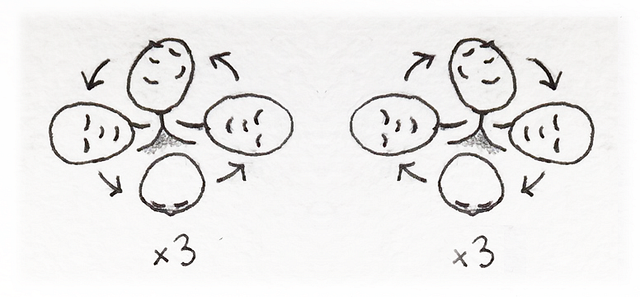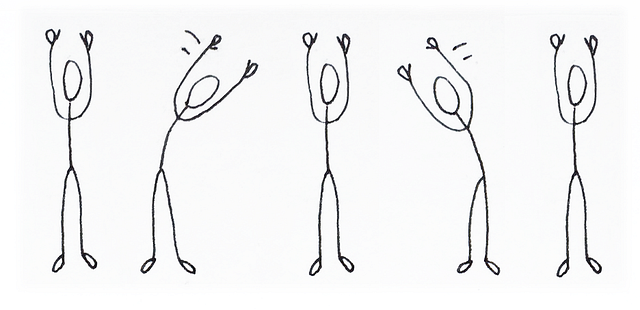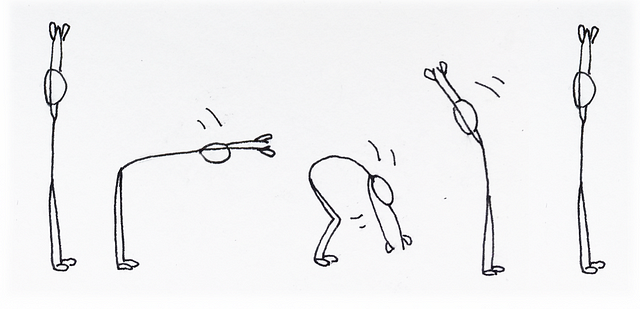(Spoiler alert: it’s not just meditation.)
Each morning, I sit in front of my altar and go through a sequence of practices, each of them important to helping my mind and body prepare for the day. I got into the habit of morning practice while on retreat at the Nyingma Institute for Tibetan Buddhism, and I’ve been doing my own morning practice in the four months since graduating. I’m able to keep up the practice only because I can so clearly see the difference on days that I don’t manage to do it.
I am sharing my morning practice because I want to encourage others to experiment with their own morning practice, to consider what practices can help you feel the most balanced and open as you enter the day.
The Setup: My Altar

If you have the time and space to create an altar, let it be one that inspires you — whether that’s shiny stones, spiritual figures, photos of friends, or doodads collected over your lifetime. That important part is that it gives you a sense of beauty and balance.
At the foot of my altar, I always have a meditation cushion, a blanket, a lighter, and a tissue box.
The Prerequisite: Waking Up Early
Setting my Intention
I start off with reciting my personal intention statement, three times. I recite the same intention each day, and it reminds me of what I strive for in my interactions with others:
“I intend to be warm, friendly, open and loving, while honoring my interests and respecting my boundaries.”
Sitting Meditation
Often, the goal of meditation is to focus on a single object, just the breath or just a particular object. In my meditation, I focus on multiple objects at once, because it is the way that I can pay the most attention to what is happening in my mind without it wandering completely away. It works well for my purposes.
“Cleansing Breath”
With tissue in hand, I first think of something I’m averse to or afraid of (like an awkward conversation or a tricky task), place one finger on my right nostril, inhale, and then blow out through my left nostril. Then I do that for 2 more things I’m averse to, 3 times on the other nostril for things I’m desiring, and 3 times from both nostrils for things I’m uncertain about.

It may sound weird, but hey, this one weird trick — it works! When I fully acknowledge the things that are gripping me — whether it’s a grip of desire or disgust — I am less under their control. I can detach myself from them. When I acknowledge the things I’m unsure of, I find I don’t put so much energy into defending myself, both internally and to others. I can just say “Actually, I don’t know!” and be okay with it.
If you’re interested in practicing Cleansing Breath, I recommend reading the full description in Tarthang Thulku’s Kum Nye book. You could also try journaling the 9 attractions, aversions, and ignorances.
Neck Stretches
First I rotate the neck in 4 axis: top to bottom, left-ear-to-shoulder to right-ear-to-shoulder, and left to right. Each time I rotate, I notice a new thing that my eyes have rested on, to increase my mindfulness.

Then I do a slow neck roll, 3 times in one direction, then 3 times in the other direction. If any part feels particularly “juicy” or “crunchy”, I spend a little more time there. This is similar to the Kum Nye practice “Lightning thoughts”, where your neck roll is as slow as possible and you observe the thoughts popping up.

“Bending in the Four Directions”
In this practice, I slowly raise my arms up to the ceiling and bend to the left. I count for 21 breaths, and return to the center.
Then I bend to the right for 21 breaths. If I feel myself getting distracted, I challenge myself to bend further. I return to the center and stretch upwards.

Now my favorite/most dreaded part. I bend forward from the waist until my arms are parallel with the floor. I reach my arms forward while jutting my hips back, and count for 21 breaths. The concentration needed to hold the pose is often strong enough to clear my mind of distraction.
From the bent forward position, I bend my knees and swing my arms up to center. I stretch backwards slightly, staring at the corner where the ceiling meets the wall, counting for 21 breaths.

I return my hands to center and slowly lower them, noticing the sensations going through my hands, arms, and body.
The Compassion Prayer
May all beings be free from suffering
May all beings be free from fear and anger
May all beings find peace and joy
May all beings have a mind at ease
No comments:
Post a Comment